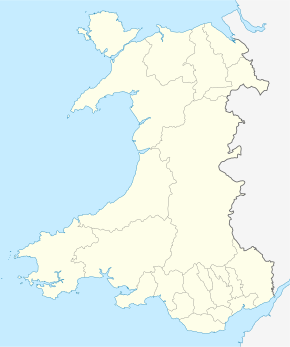
Back Замкі Эдуарда I ва Уэльсе Byelorussian Замъци и градски стени на Едуард I в Гуинед Bulgarian Castells i fortificacions del rei Eduard I a Gwynedd Catalan Hrady a opevnění krále Eduarda I. v Gwyneddu Czech Cestyll a Muriau Trefi'r Brenin Edward yng Ngwynedd Welsh Kong Edvards borge og bymure i Gwynedd Danish Burgen und Stadtbefestigungen König Edwards I. in Gwynedd German Κάστρα και Τείχη του Βασιλιά Εδουάρδου στο Γκουίνεδ Greek Castillos y murallas del rey Eduardo en Gwynedd Spanish Eduardo erregearen Gwyneddeko gaztelu eta harresiak Basque
| UNESCO World Heritage Site | |
|---|---|
| Location | Gwynedd, Wales, United Kingdom |
| Criteria | Cultural: i, iii, iv |
| Reference | 374 |
| Inscription | 1986 (10th Session) |
Location of castles and town walls in Wales | |
The Castles and Town Walls of King Edward in Gwynedd is a UNESCO-designated World Heritage Site located in Gwynedd,[nb 1] Wales. It includes the castles of Beaumaris and Harlech and the castles and town walls of Caernarfon and Conwy. UNESCO considers the sites to be the "finest examples of late 13th century and early 14th century military architecture in Europe".[1]
The fortifications form part of the Ring of Iron built by Edward I after his invasion of North Wales in 1282. Edward defeated the local Welsh princes in a major campaign and set about permanently colonising the area. He created new fortified towns, protected by castles, in which English immigrants could settle and administer the territories. The project was hugely expensive and stretched royal resources to the limit. Fresh Welsh revolts followed in 1294 under the leadership of Madog ap Llywelyn. Conwy and Harlech were kept supplied by sea and held out against the attack, but Caernarfon, still only partially completed, was stormed. In the aftermath, Edward reinvigorated the building programme and ordered the commencement of work at Beaumaris. Edward's wars in Scotland began to consume royal funding, however, and work soon slowed once again. Building work on all the fortifications had ceased by 1330, without Caernarfon and Beaumaris having been fully completed.
The fortifications played an important part in the conflicts in North Wales over the coming centuries. They were involved in the Welsh Revolt of the early 15th century and the Wars of the Roses in the late 15th century. Despite declining in military significance following the succession of the Tudor dynasty to the throne in 1485, they were pressed back into service during the English Civil War in the 17th century. In the aftermath of the conflict, Parliament ordered the slighting, or deliberate destruction, of parts of Conwy and Harlech, but the threat of a pro-Royalist invasion from Scotland ensured that Caernarfon and Beaumaris remained intact. By the end of the 17th century, however, the castles were ruinous. They became popular with visiting artists during the late 18th and early 19th centuries, and visitor numbers increased as access to the region improved during the Victorian era. The British state invested heavily in the castles and town walls during the 20th century, restoring many of their medieval features. In 1986, the sites were collectively declared to be a World Heritage Site, as outstanding examples of fortifications and military architecture built in the 13th century, and are now operated as tourist attractions by the Welsh heritage agency Cadw.
For much of the 20th century, the castles and walls were considered primarily from a military perspective. Their use of concentric defences, barbicans, and substantial gatehouses led D. J. Cathcart King to describe them as the "zenith of English castle-building", and Sidney Toy to assess them as "some of the most powerful castles of any age or country".[2] In the late 20th and 21st centuries, historians such as Michael Prestwich and Abigail Wheatley also highlighted the sites' roles as palaces and symbols of royal power. The location of castles such as Caernarfon and Conwy were chosen for their political significance as well as military functions, being built on top of sites belonging to the Welsh princes. The castles incorporated luxury apartments and gardens, with the intention of supporting large royal courts in splendour. Caernarfon's castle and town walls incorporated expensive stonework, probably intended to evoke images of Arthurian or Roman imperial power in order to bolster Edward's personal prestige. The precise role of the royal architect James of Saint George in the construction projects, and the influence of his native County of Savoy on the designs, also continues to be debated by academics. However, the primary sources do indicate he played a key role, describing him as "Magistro Jacobo de sancto Georgio, Magistro operacionum Regis in Wallia" or "Master James of Saint George, Master of the King’s Works in Wales."[3]
Cite error: There are <ref group=nb> tags on this page, but the references will not show without a {{reflist|group=nb}} template (see the help page).
© MMXXIII Rich X Search. We shall prevail. All rights reserved. Rich X Search






